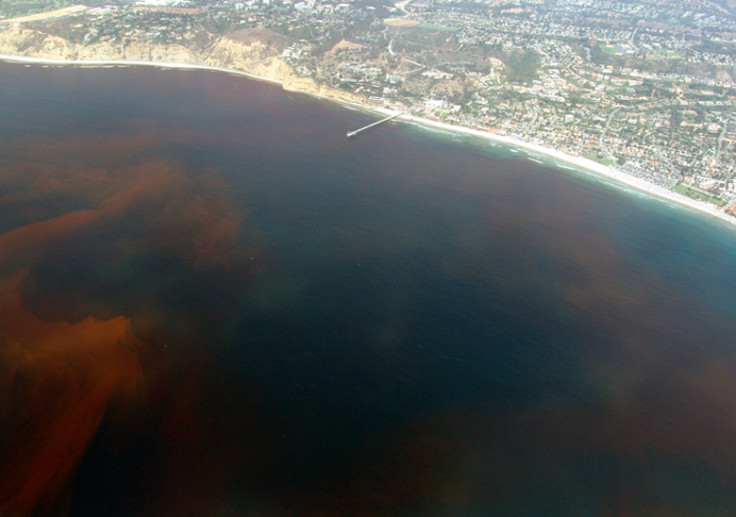Southern California: Why do red tides happen?
Scientists have come up with a way to forecast red tides, which kill marine life and cause health problems in humans.
Red tides – where seawater appears to turn red due to a high concentration of toxin-producing dinoflagellates – don't happen at random, a study has found, proposing the first method to predict when red tides will occur in southern California.
The phenomenon is a type of harmful algal bloom, which appears red, brown or orange during the day but bioluminescent blue at night, is due to an extremely high concentration of dinoflagellates in seawater. At high enough concentrations, they produce dangerous levels of toxins such as domoic acid.
Research on red tides, which happen regularly along southern Californian coasts and off Florida's Gulf Coast, has been hindered by looking at factors in the marine environment individually, instead of assessing the sea environment as a whole. A study in the journal Ecology takes a more holistic view of marine data from the past 30 years to study many of the potential causes of the blooms at once.
"Red tides were a mystery for so many years because we were looking at the ecosystem as if it was in equilibrium and unchanging and therefore could be studied a piece at a time," said study author George Sugihara of the University of California San Diego in a statement.
"It was a mystery only because we were looking at it the wrong way. Looking for things that simply 'correlate' with red tides will fail."
The researchers analysed historic data on the main pigment in the algae – chlorophyll a – nutrient concentrations, and physical characteristics of the ocean. The most important factors for causing red tides are a stable water column and low nutrient levels in the surface waters, the study found.
"The approach allowed us to find factors that come together as a perfect storm to produce a red tide," said Sugihara.

Algal blooms can produce toxins that can accumulate in fish and shellfish. Domoic acid can lead to food poisoning, paralysis, memory loss or, in very extreme cases, death if consumed in a great enough quantity in seafood.
The study is the first step in robust 'ecosystem forecasting' models that could lead to accurate prediction of red tides in real time. This could inform regulators about when to shut down fisheries to prevent toxic seafood entering the supply chain and save fishing industries money from wasted catches.
© Copyright IBTimes 2025. All rights reserved.






















